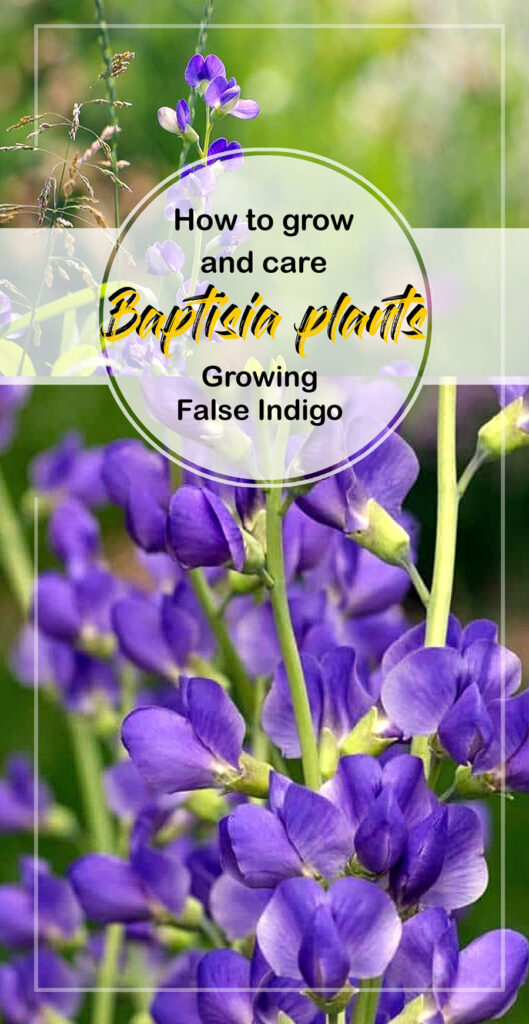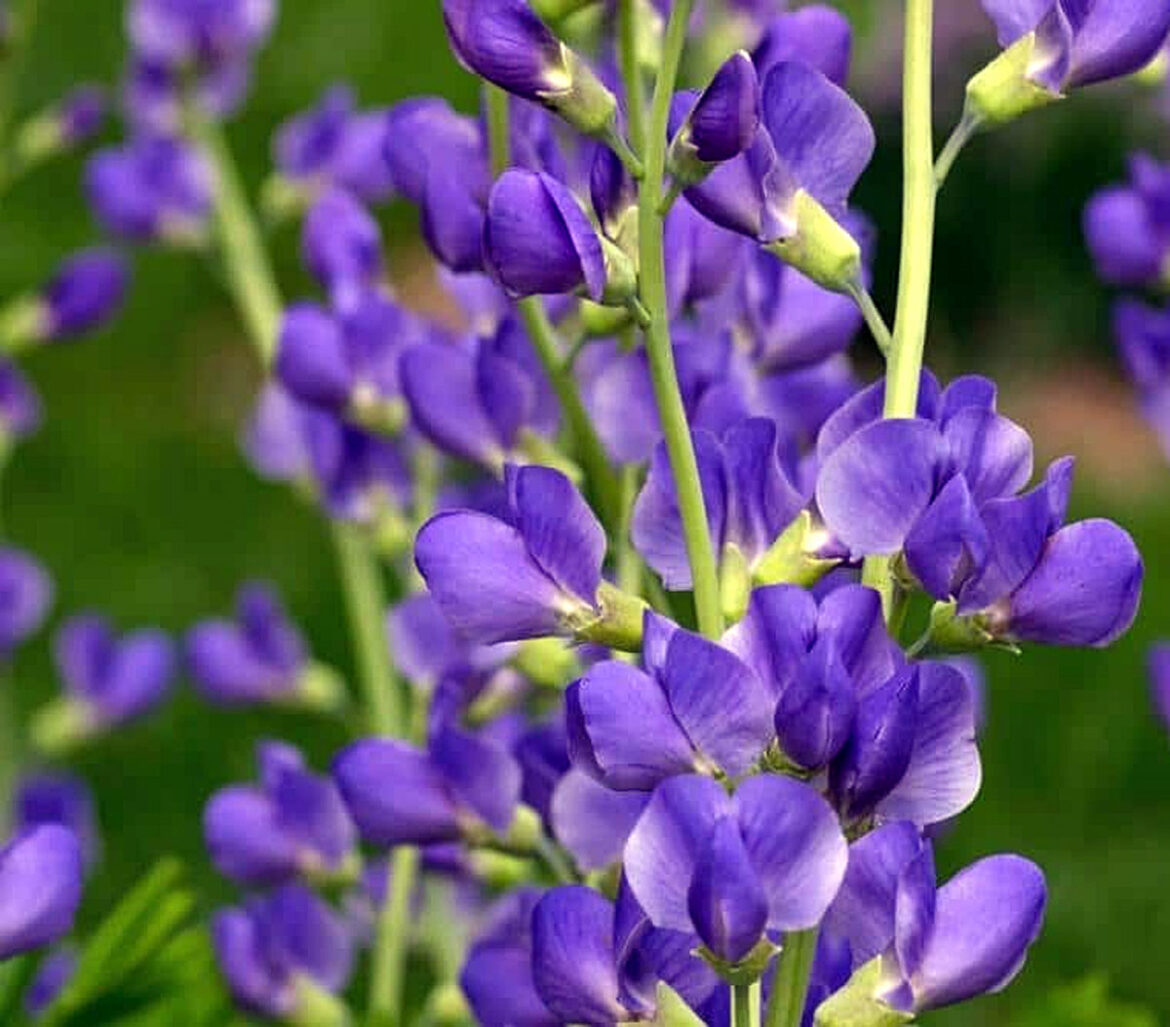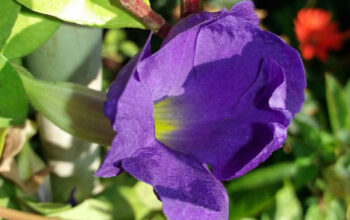False Indigo Plant (Baptisia)
Baptisia (wild indigo, false indigo) belongs to the legume family, Fabaceae. They are perennial herbaceous plants with flowering pea-like blossoms and pods that are often inflated. They are native to eastern and southern North American woodlands and grasslands.
The False indigo is a shrubby perennial found in late spring blooming in shades such as yellow, blue, and purple. A new plant emerges in the spring, resembling a black asparagus shoot. Gray-green leaves and dark stems occur on the large, round shoots as the plant matures into a shrub-like plant.
Indigo blue is believed to facilitate the immune system, thereby purging infections. The remedy is often used for ear infections, nose infections, and throat infections. False Indigo root was traditionally used to purge by Native Americans, and it was brewed into a cold tea to prevent vomiting.
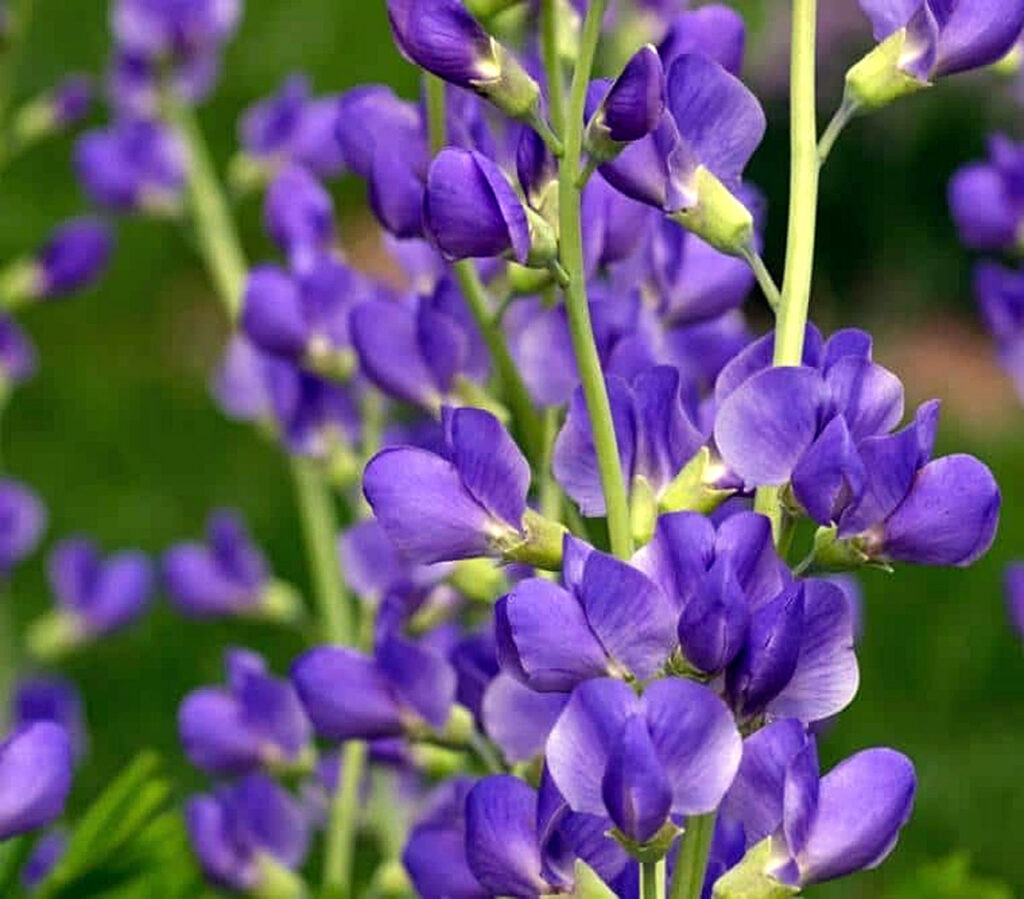
Overview False Indigo Plant
Scientfic name Baptisia
Common name Blue wild indigo, False indigo.
Plant type Flowering plant
Sun Full sun tolerates mild shade
Soil Well-drained profound, and rich soil
Soil pH Slightly acidic to neutral
Blooming time March to May
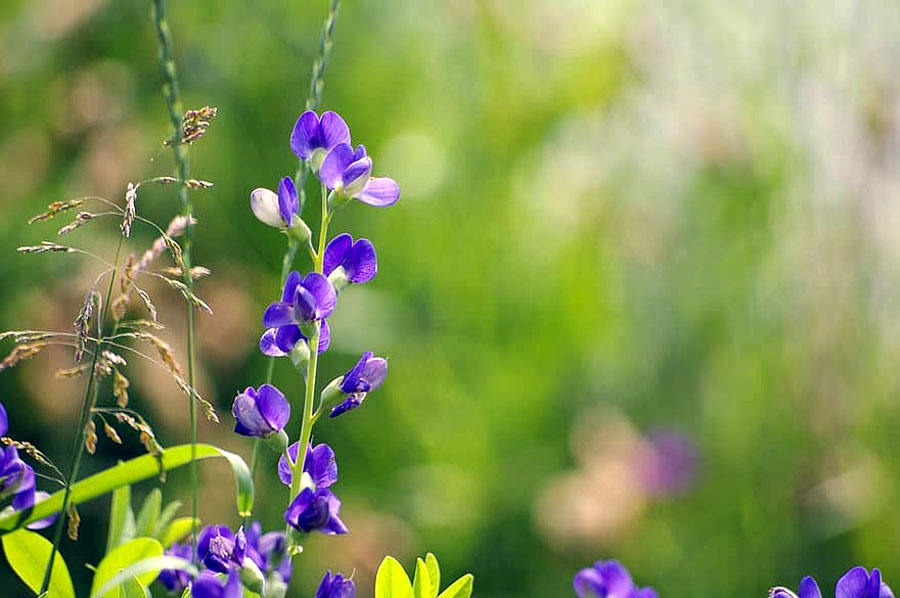
How to Grow and Care about False Indigo Plant
In comparison, plants started from seed can take up to four years to reach their maximum height when they are started from nursery plants. Cultivating false indigo in spring is best accomplished when there is no threat of frost. Maintenance is minimal for these plants.
Growing from seeds
Although false indigo seeds can be grown, it is not suggested. Some types of scarification will improve the germination of false indigo seeds since they have a tough outer coating. Ideally, you should soak the seeds for at least eight hours before you scarify them, but some gardeners simply sow the seeds in the fall and wait for winter temperature to soften the seeds.
It takes three to four years for the seeds to develop and evolve large enough to bloom meaningfully. Therefore, stem cuttings are usually used to propagate these plants.
Growing from cuttings
- Despite their extended taproots, false indigo plants grow well from stem cuttings.
- With a sharp pruner, take stem cuttings around six inches long containing at least two leaf sets and one leaf bud.
- Cultivate the cutting end in a small pot of potting mix after dipping it in the rooting hormone.
- Make sure the pot and cut are wrapped in a plastic bag or another type of plastic. Monitor the pot frequently, and lightly moisten it if the potting mix begins to dry out. Keep it in a bright, uniformly warm location. It will take about eight weeks for the cuttings to root.
- As soon as the cutting produces roots, remove the plastic and grow the new plant until it is big enough to cultivate in the garden.
Sunlight
It is best to cultivate false indigo plants in full sun, though they tolerate mild shade. Shade may result in less flowering and staking may be needed. The False Indigo plant will become slack if it does not receive at least six hours of full sunlight each day. Moreover, the sun prevents fungal diseases as well.
Watering
The first season is crucial for False Indigo plants to establish properly. Water them more frequently during dry weather. It is important to water the plant frequently in the first season to boost it to expand its long taproot, which will result in a drought-resistant plant in the future.
Soil
In order to grow false indigo successfully, the soil should be slightly acidic. Lime should not be added to the soil. The best soil for the False Indigo plant is well-drained, profound, and rich, although it can grow quite well in low-fertility soils as well.
Temperature and Humidity
It is advisable to begin cultivating at least five weeks prior to the outdoor night temperatures reliably reaching 10 C (50 F). There are conditions that will facilitate the growth of false indigo in the garden throughout its hardiness range, zones 3 to 9.
When the humidity is high in a glass pot or plastic tent, the cuttings should root in approximately eight weeks. Provided it receives enough moisture in the soil, it does well in both dry and humid climates.
Fertilizer
The false indigo plant is one of the most effortless plants to maintain. Fertilize your garden early in the spring, followed by additional summer feedings, or use a slow-release fertilizer. Their growth demands no additional fertilizer or irrigation once they have been established. You don’t want to fertilize it too much because it will cause the plant to become leggy and flop.
Read also:
How to grow and care Hoya plants. Growing and care for Ixora houseplants. How to grow Calendula. 11 best Winter flowers for your garden. 9 Best plants for your bathroom. 9 Easy growing herbs for your garden.
For pin
